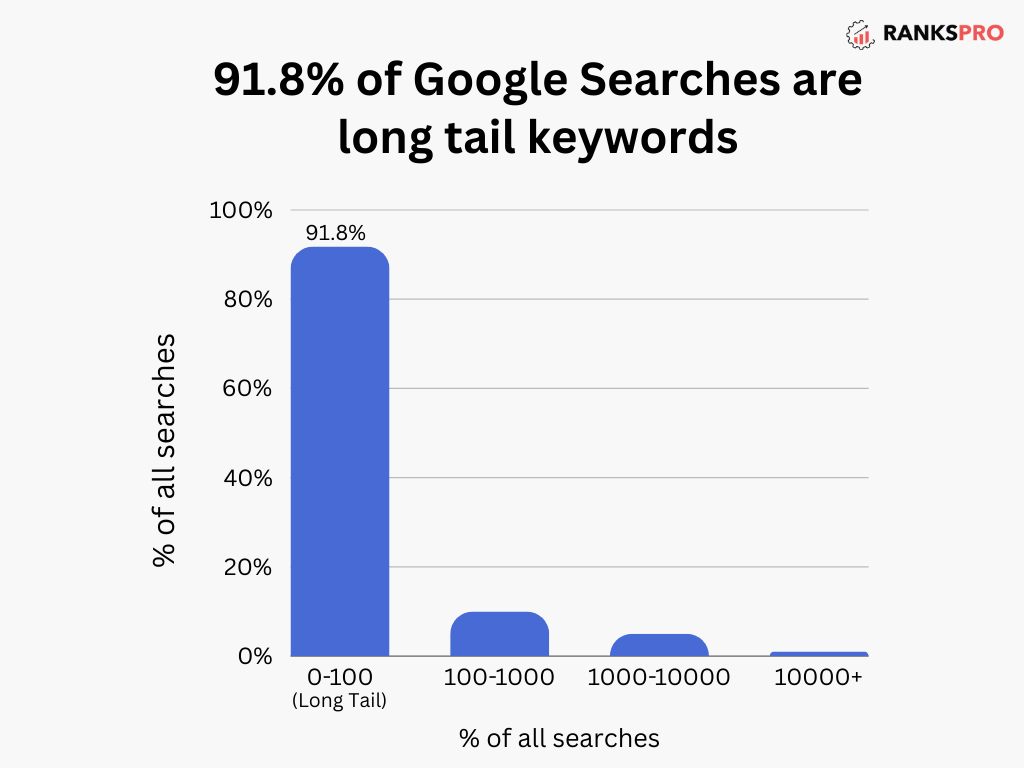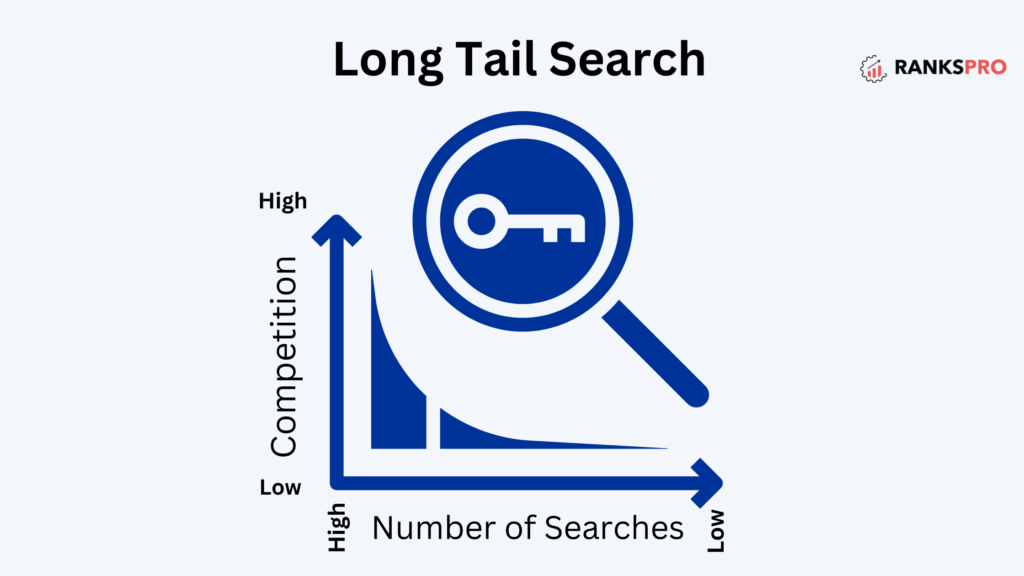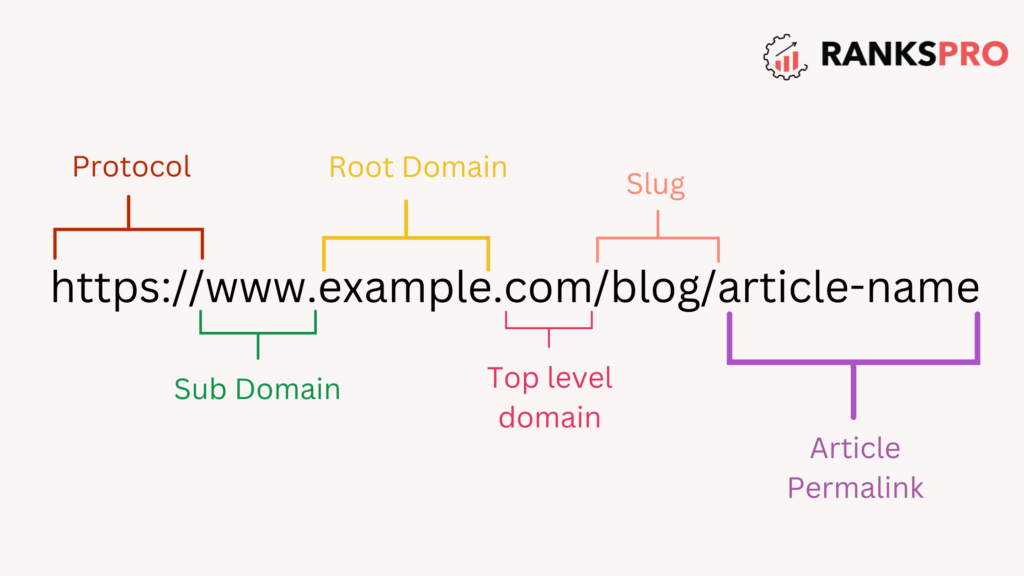Long-tail keywords are a really great opportunity in the world of SEO. For sure they are less competitive and have fewer searches than the general keywords. However, they may have a higher conversion rate simply because they are so much more specific.
By targeting long-tail keywords, you can increase visibility gradually, hence attracting a new and motivated audience. In putting a long-tail keyword strategy in place, it is therefore essential to understand what your business does and what is in your products.
This post will help you identify relevant and valuable keywords that might perfectly match the intent behind your target audience’s search.
What are Long-tail Keywords?
Long-tail keywords are fairly three to five word-length phrases that target as much as one can for SEO. These keywords are much less competitive than generic keywords but still bring in quality traffic and convert since they mirror the nuances of your target audience’s search queries.
Thus, long-tail keywords are necessary as the customers move down along the journey. At the beginning, the potential customers might use broad searches. However, to be satisfied later down the journey, they need to have specific information.
You will need to use long-tail keywords instead to differentiate your brand and attract the customer.
Through applying long-tail keywords to enhance your SEO strategy, you will be able to make your website become visible, qualify more leads, and deliver conversions.
Why are Long-tail Keywords Important?
Long-tail keywords are the words that make up a search term. Some of them carry three or more words. These keywords make up more than 90% of search queries, which lets us know that people are using more specific and detailed language for searching.

This is partly because of the growth in voice searches. People tend to communicate naturally and with phrases that make longer and more specific search queries.
Here are more critical reasons why long-tail keywords are important for SEO:
- More Conversion Rates
The long-tail keywords are much more extended than the short-tail keywords, even closer to the intent in the heads of the users. This tends to produce a much higher conversion rate since the user is more likely to be ready to make a purchase.
A long-tail keyword attracts much more targeted audiences, and it’s much more probable that they may be interested in your products or services.
- Targeted Traffic
They are more qualified leads because a search for long-tail keywords indicates something unique need or want on behalf of the user. Long-tail keywords help you attract the visitor who is more likely to stay on your website and spend some quality time with your content.
- Better User Experience
The long-tail keywords reflect specific needs of the user and the questions the user has. While doing so, your content is more inclined to give a better user experience.
This way, if the user finds the content relevant, they are likely to engage with your website and take desired actions. Thin content with less keyword utilization makes it tough to perform on search results.
- Lesser Competition
Long-tail keywords are harder to compete than short-tail keywords. Using them gives you an opportunity for targeting specific niches or submarkets. Make sure they have less competitive as it will enhance the opportunity to rank higher on Google.

- Brand Visibility
Long tail keywords can help to increase your visibility on smaller niche markets, or for terms that are searched for less often. Improving long-tail keyword rankings will improve your overall search engine ranking and making your brand more visible.
You can use long-tail keywords to exhibit your area of expertise, creating your brand as the authority in the discussed topic.
How to Find Long-Tail Keywords?
Now that you know the importance of long-tail keywords, not just for SEO but for enhancing you content performance, let’s know some effective ways to find them.
1. Use RanksPro’s Keyword Research Tool
To find the relevant long-tail keywords, you should try RanksPro’s keyword research tool. It provides in-depth details about the keywords for the targeted regions. Let’s try what more it does while researching for the long-tail keywords.
First, signup or login with your account details to start using the tool.

After logging in, go to Keyword Research tool.

Now enter a broad keyword and select the targeted region in which you want to be ranked, for example, ‘content marketing’.

You will get all the relevant analysis that include metrics like search volume, CPC, impressions, etc. Now click on Keyword Variations.

You will get more than 10000 keywords ideas as a result. Now to pick only long-tail keywords, you can choose competitive keywords that have higher search volume and lower search difficulty (red = highly difficult and green = least difficult).

You can also make your own list by selecting the relevant long-tail keywords.

Type a broad keyword into the tool. The tool will quickly kick back different variations of your seed keyword. Once selected, click on the ‘+’ and name your list to save.

To check your list, click on ‘View Keyword List’ on top right corner of the table.

You can also pick ‘Question-based Keywords’ suggestions, as shown next to ‘Keyword Variations’. This will help you explore for more opportunities to create content by answering the most search queries.
2. Use Google Autosuggest
Where Google Autosuggest won’t give you a full list of all those relevant long tails, it’s an excellent starting point to get ideas.

You log into your target term and then look at the suggested terms to get an idea of what some of the frequent search queries are and hopefully find opportunities for long-tail keyword intelligence.
Here are the best ways to utilize Google Autosuggest:
- Seed keyword selection: You start with a relevant seed keyword associated with your business or industry.
- Alphabet search: Enter each letter in the alphabet following your seed term, and recommended autocomplete terms should appear.
- Space and underscore: When you enter a space then an underscore followed by a space with your search term, you will get new keyword ideas to pop up.
- Incognito mode: Use the incognito mode so that you do not have personalized search results based on your browsing history.
- VPN plugins: If your niche target audience is outside the country where your website is based, use a VPN to simulate their location and get more relevant autocomplete suggestions.
- Singular and plural forms: Test both singular and plural forms of your keywords as they likely seek the same thing but in different tenses, thereby capturing a wide range of search queries.
- Long phrases: Target long phrases or a set of words, which are more specific and less competitive.
Look for the intent behind each keyword in order to ensure that the keyword represents a search that will meet the needs of your target audience.
3. Utilize Google’s Related Searches
Google’s Related Searches is an excellent feature to find long-tail keyword opportunities. Just like the autocomplete suggestions that drop as you type, these related searches come on the search engine results page as you scroll down.

You may get more keyword suggestions using Related Searches than from traditional autocomplete. Google Algorithms often provide better suggestions considering your location, search history, etc.
The suggested keywords will be even closer to your actual search query, meaning it is highly probable to attract targeted traffic.
Here are some tips on Google Related Searches:
- Start a search: Insert your targeted keyword or phrase.
- Go to the bottom: Scroll down to the bottom of the SERP for the “Related Searches” box.
- Analyze suggestions: Go through the suggested keywords and look for potential long-tails that best represent your target audience and your business goals.
Using Google’s Related Searches, you can easily discover great long-tail keywords that will help you improve website visibility and attract more targeted traffic.
4. Leverage Q & A Websites
Q&A sites can be used as a treasure trove of long-tail keyword opportunities. These sites include Quora, Yahoo Answers, Answers.com, Askville by Amazon, and LinkedIn Answers, representing a goldmine of user-generated questions reflecting real-world search queries.
Q&A sites are great, as they expose the same information users are looking for. Thus, the questions themselves become fantastic long-tail keywords. These tend to have much more targeted natures compared to your broad search terms that you can leverage to get super high-quality traffic.
These platforms give you great coverage of all topics, allowing you to find long tail keywords relevant to your niche. Here are some critical tips to use Q&A website for long-tail keyword research:
- Identify relevant channels: Look for Q&A websites that are specific to your industry or niche to which your target is belonging.
- Keyword research: Search the keyword volume and the competition level for each keyword you might find.
- Leverage long phrases: Be inclined towards longer phrases having higher search volume and less competition for better conversion.
- Informative content creation: Use such information to draft informative pieces answering the questions that users might ask.
Therefore, strategic application of Q&A sites can unravel a reservoir of very relevant long-tail keywords which can assist you to create content that precisely meets the requirements of your intended audience.
5. Perform Keyword Gap Analysis
A keyword gap analysis can be an effective tool to find out the long-tail keywords your competitors are ranking for but you are not. With the usage of such an analysis, you can make use of your SEO strategies and increase your visibility in search results.
Here’s how you can conduct a keyword gap analysis:
- Find your competitors: Identify your top competitors in the industry and analyze their online presence.
- Use RanksPro for keyword research: As we discussed above, you can use RanksPro’s keyword research tool to find the competitive keywords. Use this tool to extract lists of keywords that your competition targets.
- Analyze keyword metrics: This includes an analysis of the search volume, competitiveness and difficulty pertaining to each keyword.
- Identify keyword opportunities: Compare your extracted keywords against your keyword list to see the gaps. Prioritize keywords relevant to your business and which realistically are going to have a reasonable amount of competition against you.
Long-tail keywords will be found, that when used on your site, will really increase the search engine rankings and send targeted traffic to your website through advanced keyword gap analysis.
6. Analyze Results in Google Search Console
Google Search Console is a very useful tool to understand how your website is performing. One of its most useful features is the Search Queries Report.
Here are how you can utilize Search Queries Report to find your long-tail keywords:
- Use filters like ‘Impressions and Clicks’: Look at keywords that are generating a decent number of impressions but get a small number of clicks. These may be opportunities to enhance the content or targeting.
- Focus on search intent: Get a feel for what intent searches are, so that you know where to go to discover relevant long-tail keywords that align with the needs of your target audience.
- Keyword expansion: Search Console utilizes Google’s suggested related search terms to help you find new opportunities using long-tail keywords.
You can get even more insight into the performance of your site with the use of the Search Queries Report. You can identify long-tail keywords which could potentially target relevant and more traffic to your web pages and possibly improve search rankings.
How to Use Long-tail Keywords?
Once you have your own list of long-tail keywords, you should know where to implement them for better SEO results. Here are certain ways to use long-tail keywords:
1. Optimize content with long-tail keywords
Integrate long-tail keywords into your content: titles, headings, subheadings and body text. Use them appropriately without overwhelming your content.

Also, ensure that the chosen keywords are relevant to the topic in hand and add value to your audience. Avoid keyword stuffing as this might hurt overall reading experience and SEO as well.
2. Optimize headings with long-tail keywords
Long-tail keywords in headings could promote more favorable position in SERPs. Relevant headlines can make it more likely for the CTR to increase in particular, meaning that organic traffic will increase. Compelling headlines attract users to make a click on a piece of content, and consequently, increase engagement as well as time on page.
3. Implement long-tail keywords in URLs
Including long tail keywords in your URLs will also bring in more targeted traffic, since it clearly indicates the content to be found on your page.

Many search engines use URLs as ranking factors; therefore, including relevant keywords will boost your ranking on the search result. Descriptive and clear URLs generally have positive effects on the user’s experience and navigation.
4. Measure results using long-tail keywords
Analyze the rankings of your website for some key target terms using any SEO tool. Track changes in website traffic and conversions post-implementing long-tail keyword strategy. Try out variations of keywords to determine the most effective ones.
5. Use long-tail keywords in ad campaigns
Add the long-tail keywords to your advertising campaigns as negative keywords to exclude unwanted traffic. Create targeted ads with long-tail keywords to hit the actual right audience.
6. Optimize internal linking structure with long-tail keywords
Internal linking will make it easier for users to navigate your website and find relevant content. It can help improve the ranking of your website in search engines by spreading link authority and offering context to search engines. Include long-tail keywords in your internal anchor text to create a natural flow of keywords throughout your website.
Key Takeaways
Keyword research still lies at the heart of any effective SEO strategy. While extremely competitive, short-tail keywords are much less likely to be used by all businesses, while long-tail keywords will definitely assist businesses of any size.
Long-tail keywords can be the game-changer for any new website or one that simply cannot rank for highly competitive terms. Targeting more specific and less competitive search terms, you’re increasing your chances of increasing your visibility on the results pages of a SERP.
Also, it will cater to high-quality audiences who are likely to convert because you will be offering relevant and valuable content to your audience. Making the right use of long-tail keywords in your SEO can really position your website for success and get you your desired business goals.




